 |
 |
 |
| |
NEW HEPATITIS B INFECTION AMONG HIV PATIENTS: WHO IS AT RISK?
|
| |
| |
CROI 2022 Feb 11-16
Mamta K Jain1,2, Karen J. Vigil3 , Onkar Kshirsagar4,Laura Hansen1, Barbara S. Taylor5 , Mae Thamer4
1 University Of Texas Southwestern Medical Center, Dallas, Texas, USA, 2 Parkland Health and Hospital System, Dallas, Texas, USA, 3University of Texas Health Science Center, Houston, Texas, USA, 4Medical Technology & Practice Patterns Institute, Bethesda, Maryland, USA, 5University of Texas Health Science Center, San Antonio, Texas, USA
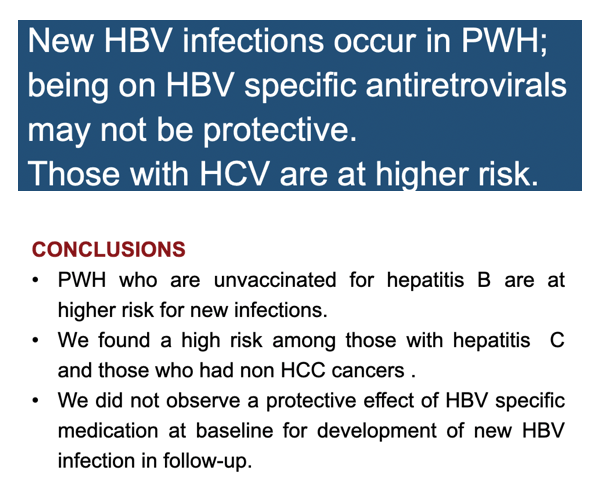
program abstract
Background:
New hepatitis B infection is infrequent but preventable. Vaccines and hepatitis B virus (HBV) specific antiretrovirals (ART) may offer protection for people living with HIV (PLWH). Hepatitis B in PLWH places them at increased risk for mortality compared to PLWH without HBV or those with HBV alone. We sought to examine the incidence of HBV and factors which predict risk for acquiring infection among PLWH.
Methods:
This is a multi-site retrospective study. Inclusion criteria were PLWH with minimum of 1 up to 9 years of follow-up from 1/1/11 to 12/31/18. Patients were excluded if no HIV viral load or CD4 count were available. We excluded those who were hepatitis B surface antigen (HepBsAg) positive within 6 months of study entry or 1 year after; hepatitis B e antigen positive, or HBV DNA positive within first 6 months prior to study entry. We examined the outcome of becoming HepBsAg positive in the follow-up period.
Results:
Out of 26, 152 PLWH, 12,285 were included (72.3% male, 56.9% Black, 58.7% indigent), 35.2% had CD4 <200 cells/µL, 12.3% HIV viral load <50 copies/mL, 42.6% were HBV immune at study entry. Within 2 years of study entry, 80.6% were on an HBV-specific HIV regimen. Overall, 0.49% (n= 60, 70% male, 77% Black; 65% non-immune and 52% with CD4 <200 cell/µL at baseline) developed incident hepatitis B during follow-up. Those with HCV (aOR 3.08 95% CI: 1.72-5.51, p<.01), non-HCC cancers (aOR 1.96, 95% CI: 1.13-3.42, p=0.02), or HBsAb non-immune at baseline (aOR 4.56 95% CI: 2.11-9.86, p<.01) were more likely to develop new hepatitis B infection. Being on non-HBV specific medication or not on ART vs. being on HBV specific regimen at baseline (aOR 1.17 95% CI: 0.06-2.25, p=0.65) was not associated with new HBV infection. Figure 1 shows cumulative risk of acquiring incident HBV stratified by HCV status and hepatitis B immune status.
Conclusion:
Patients who are not vaccinated against hepatitis B are at increased risk for HBV infection. We found a high risk for incident HBV among those with hepatitis C and those with non-HCC cancers, which may be associated with other risk factors for hepatitis B transmission. We did not observe a protective effect of HBV specific medication at baseline for development of new HBV infection in follow-up. Understanding the etiology of new hepatitis B infection in the HIV population is essential in designing future effective target programs for hepatitis B elimination among this vulnerable population.
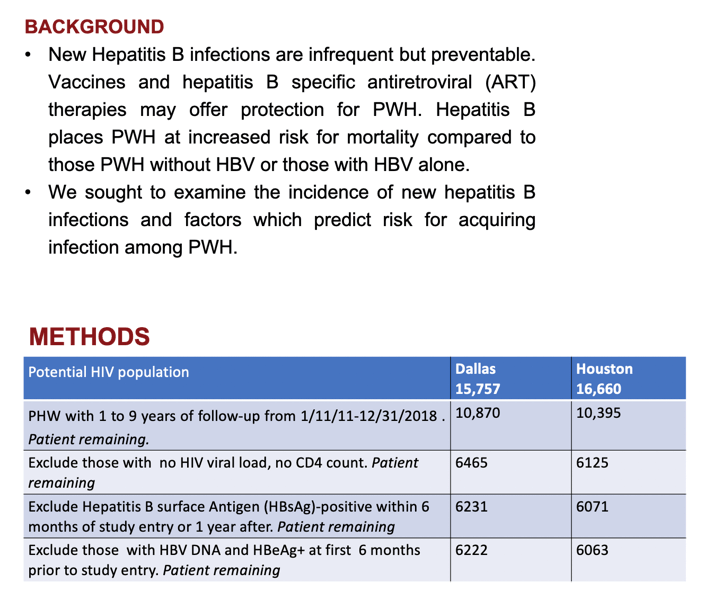
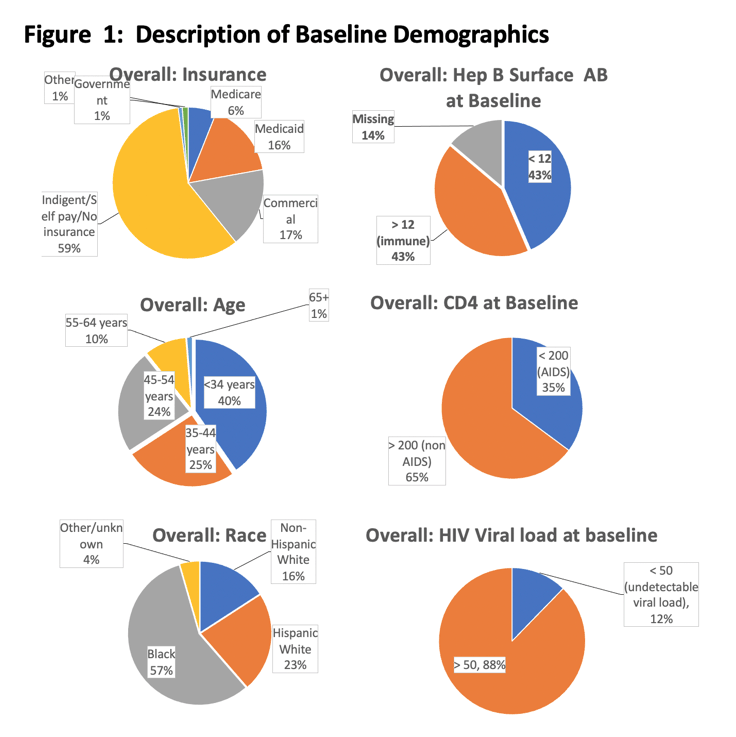
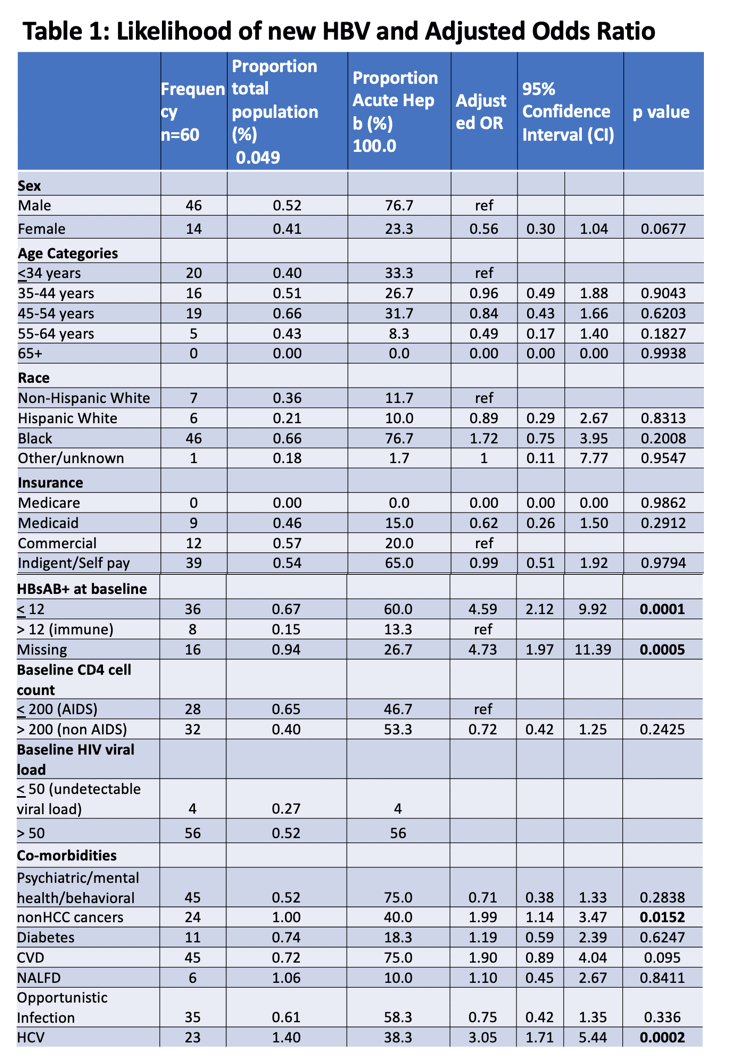
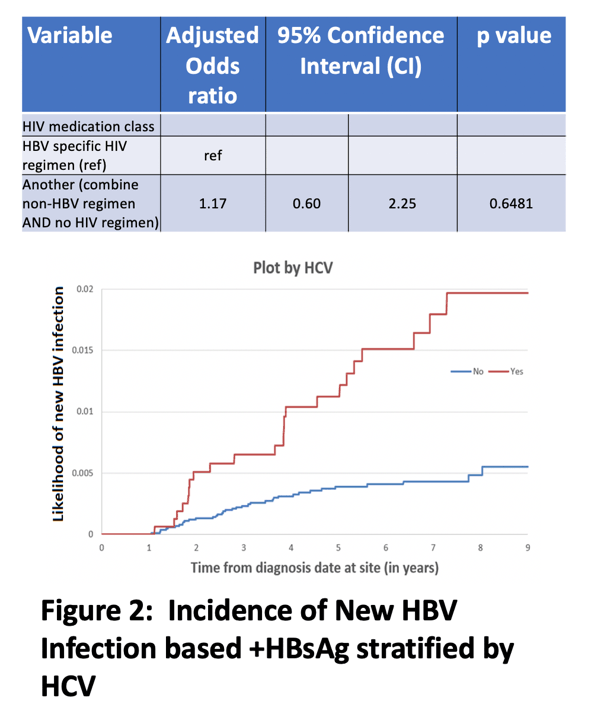

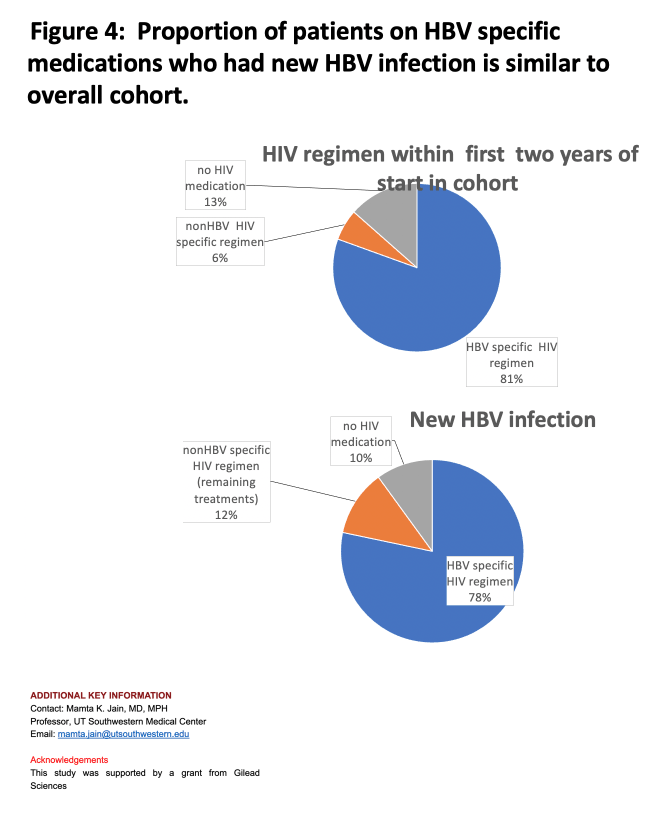
|
| |
|
 |
 |
|
|